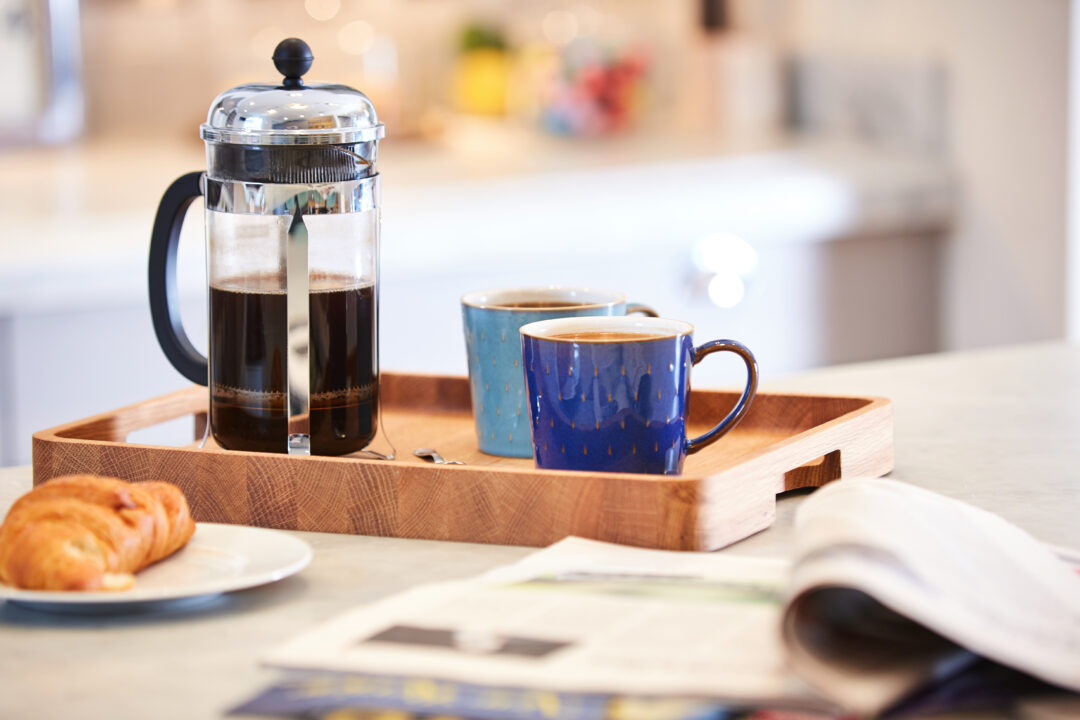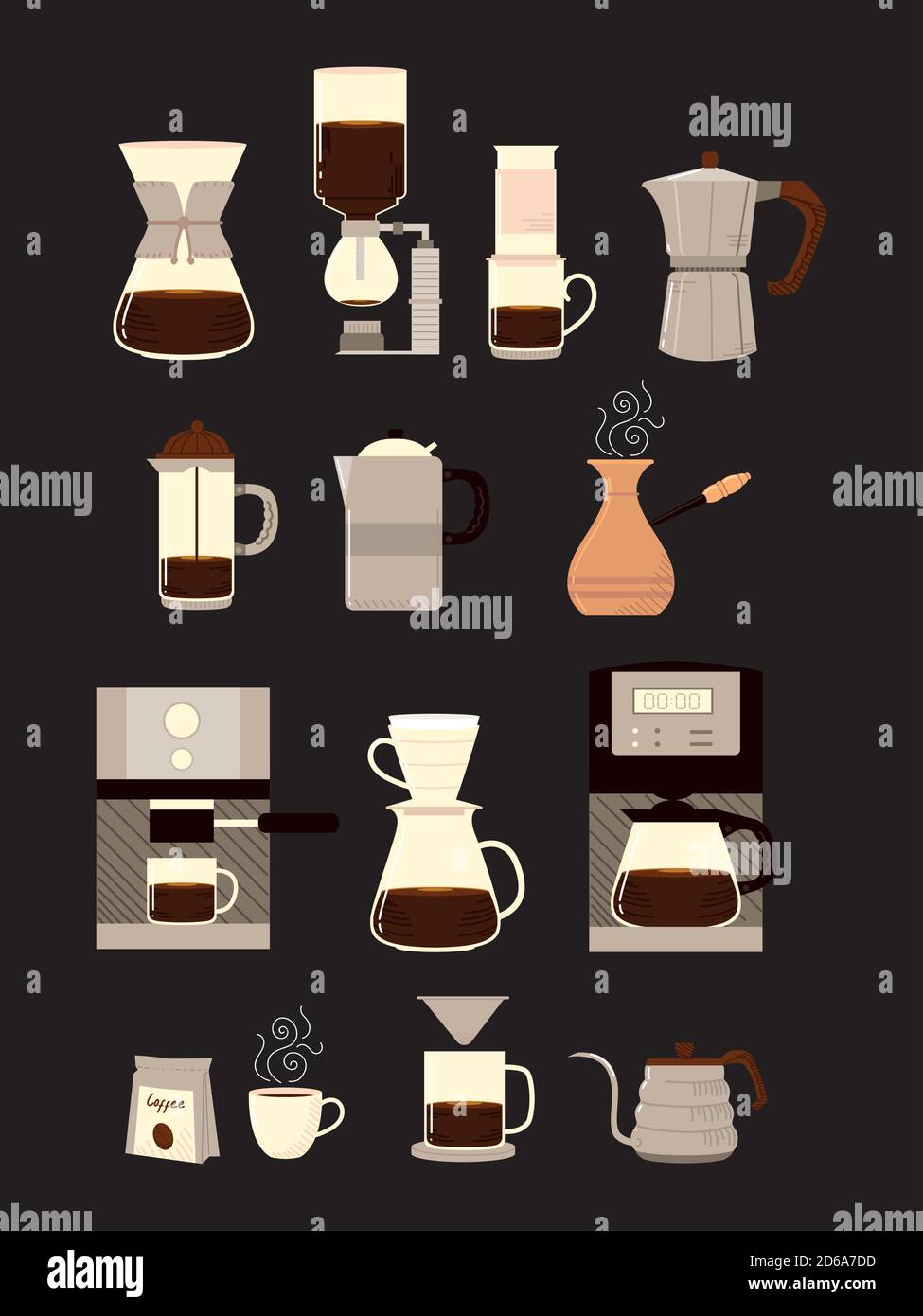A Comprehensive Overview to Different Coffee Brewing Methods You Ought To Try
A Comprehensive Overview to Different Coffee Brewing Methods You Ought To Try
Blog Article
The Scientific Research Behind Coffee Developing: Just How Temperature Level and Time Affect Your Beverage
Comprehending the scientific research behind coffee developing reveals that temperature level and time are not simple variables but pivotal components that dictate the drink's taste profile and overall quality. The optimum brewing temperature level usually drops in between 195 ° F and 205 ° F, while the duration of extraction varies dramatically across different approaches. This interplay of factors can cause a cup that is either fascinating or frustrating. As we explore the subtleties of these elements, the inquiry arises: just how can one properly equilibrium temperature and time to accomplish that ideal mixture?
The Chemistry of Coffee Extraction
The chemistry of coffee extraction looks into the detailed procedures that transform raw coffee beans into the fragrant drink taken pleasure in worldwide. This change largely entails the solubility of various substances present in the beans, which are influenced by factors such as work dimension, water top quality, and the developing approach used.
Throughout the brewing process, warm water functions as a solvent, drawing out soluble substances, consisting of caffeine, sugars, lipids, and acids, from the coffee premises. Each compound adds to the taste profile, fragrance, and body of the last drink. Acids are liable for intense and tangy notes, while oils add to an abundant mouthfeel.
The extraction process is not uniform; different compounds liquify at different rates. The first stages of brewing essence acids and sugars, causing an enjoyable acidity, while prolonged removal can cause resentment because of over-extraction of unfavorable compounds. Recognizing these chemical interactions is vital for enhancing developing methods, as the balance between removal time and water temperature level can substantially influence the total quality of the coffee. Ultimately, understanding the chemistry of coffee extraction is key to accomplishing a all-round and delicious cup.
Ideal Brewing Temperatures
Finding the ideal brewing temperature is essential for opening the complete capacity of coffee tastes and scents - coffee brewing methods. Research study indicates that the optimum array for developing coffee exists between 195 ° F to 205 ° F(90 ° C to 96 ° C) Within this range, the extraction process properly dissolves the desirable soluble substances in coffee beans, bring about a tasty and well balanced mug
Brewing at reduced temperatures, such as below 195 ° F(90 ° C ), may cause under-extraction, yielding an acidic and weak brew with low-key tastes. Conversely, developing at temperature levels exceeding 205 ° F(96 ° C) can bring about over-extraction, producing a bitter and harsh preference due to the extreme dissolution of unfavorable compounds, such as tannins.
In addition, the suitable brewing temperature can differ depending upon the coffee bean kind and roast degree. For example, lighter roasts typically benefit from a little greater temperature levels to improve their complex flavor profiles, while darker roasts may be better suited to lower temperatures to alleviate bitterness.
Eventually, keeping accuracy in developing temperatures is vital for achieving an unified equilibrium of tastes, making sure that every mug of coffee delivers an enjoyable sensory experience.
Influence of Brewing Time
Brewing time plays an essential role in determining the flavor account and total high quality of coffee. The extraction procedure, which affects the preference, aroma, and body of the drink, is largely reliant on how much time the coffee grounds touch with water. Shorter developing times can cause under-extraction, resulting in a weak or sour flavor, as not adequate soluble compounds are liquified. Alternatively, prolonged developing can result in over-extraction, where unfavorable compounds are launched, resulting in an astringent or bitter preference.
Optimum brewing time varies you can check here relying on the method made use of and the grind dimension of the coffee. A French press typically requires concerning four mins, while espresso extraction is normally finished within 25 to 30 secs. It is necessary to calibrate developing time in conjunction with other variables, such as water temperature and coffee-to-water ratio, to accomplish the preferred taste profile.
Comprehending the impact of developing time makes it possible for coffee lovers to refine their brewing strategies, ultimately enhancing the sensory experience of their mug (coffee brewing methods). With cautious interest to this variable, one can open the full capacity of the coffee, revealing its one-of-a-kind characteristics and subtleties
Developing Approaches and Their Impacts

As an example, approaches like French press and chilly mixture permit a longer steeping time, resulting in a fuller body and robust taste because of increased removal of oils and soluble solids. Alternatively, coffee developing utilizes high pressure and a much shorter removal time, producing a focused shot that emphasizes intense flavors and an abundant crema.
Pour-over strategies, such as Chemex or V60, supply an even more controlled removal procedure, enabling the maker to control circulation price and water circulation, which can boost illumination and clearness. Percolation methods cycle water via the coffee grounds numerous times, leading to a stronger, commonly bitter taste.
Last but not least, making use of paper filters versus steel filters can additionally affect the last taste; paper filters typically generate a cleaner cup by trapping oils and great particles, while metal filters enable more oils to pass through, contributing to a fuller mouthfeel - coffee brewing methods. Comprehending these subtleties can raise the coffee experience significantly
Tips for Perfecting Your Mixture
A well-executed mixture can transform even the most basic coffee right into an amazing experience. To achieve this, focus to information is important. Begin with top quality, newly baked beans, as their flavor profile lessens with time. Grind the beans prior to making to maximize quality, ensuring the grind dimension matches your brewing approach-- coarser for French press and finer for espresso.
Water quality plays an important duty; use filtered water devoid of contaminations. The perfect brewing temperature varies between 195 ° F and 205 ° F(90 ° C to 96 ° C ) Also warm can burn the coffee, while also awesome might under-extract tastes.
Timing is similarly essential. For immersion approaches, soaking for 3 to 5 minutes is ideal, whereas drip techniques generally take around five mins. Experiment with mixture times to discover your favored toughness.

Final Thought
In recap, the intricate partnership in between temperature and time is paramount you could look here in the coffee developing process. Abiding by optimum developing temperature levels between 195 ° F and 205 ° F, alongside specific timing customized per approach, makes sure the wanted taste profile is achieved. Understanding these clinical concepts equips individuals to fine-tune their developing techniques, eventually causing an extra balanced and enjoyable coffee experience. Proficiency of these aspects is important for any coffee lover seeking excellence in their drink.
Recognizing the science behind coffee developing discloses that temperature and time are not simple variables however pivotal aspects that dictate the drink's flavor profile and general quality. Recognizing these chemical interactions is essential for optimizing brewing strategies, as the equilibrium in between extraction time and water temperature can significantly influence the overall high quality of the coffee.Developing time plays a crucial function in determining the flavor profile and total quality of coffee. By concentrating on these aspects-- bean top quality, grind size, water temperature level, steeping time, and proportion-- you can elevate your coffee developing process, resulting in a regularly superior mug.
In summary, the complex relationship in between temperature and time is vital in the coffee developing process.
Report this page